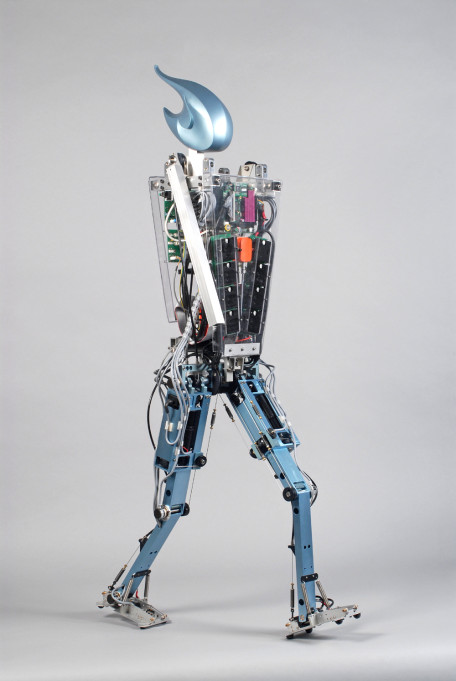HOT
 Production-Quality Lenses Directly from SLA 3D P…
Production-Quality Lenses Directly from SLA 3D P… Forging Ahead with Solar Energy and GibbsCAM CNC…
Forging Ahead with Solar Energy and GibbsCAM CNC… GibbsCAM Software Helps Race-Team Mechanics Beco…
GibbsCAM Software Helps Race-Team Mechanics Beco… Metro Aerospace Introduces 3D Printed Part for F…
Metro Aerospace Introduces 3D Printed Part for F… GibbsCAM Enables Rover Exploration Vehicle Parts…
GibbsCAM Enables Rover Exploration Vehicle Parts… Designing a Custom Boot for an Injured Penguin
Designing a Custom Boot for an Injured Penguin Asano Uses Geomagic 3D Scan Software to Drive In…
Asano Uses Geomagic 3D Scan Software to Drive In…
FLAME
The Delft Biorobotics Lab, at the Delft University of Technology, the Netherlands, currently focuses its work on humanoid robots. The lab has extensive experience in biped robots, with the first biped robot dating back to 1995.
The FLAME robot is the 10th generation and was completed in the spring of 2008. Flame, named after the shape of its head which represents the logo of the University, is an active walker. This means that the robot is using actuators to control its gait. Studying gait with robots is interesting to learn how a human actually walks and in order to improve power performance and stability of the robot.
Flame uses the MTi for its stability, actually as an organ of balance, its data proved to be of great importance. The MTi is lightweight and is easy to build in. The low response time of the MTi means that Flame does not fall to the ground when there is a moment of instability. If the robot should be put out of balance with a push from the right, it will detect that it is falling to the left and put the left feet a little bit more to the left. Because of the on-board processor, the MTi could be easily connected to a low-power PC104 processor.
Next, the Delft University of Technology will compete with Tulip, a robot that was jointly-developed by three technical universities and Philips in the Netherlands, which has competed in the RoboCupSoccer 2008 World Championships in China and will strive for the podium in 2009.





































